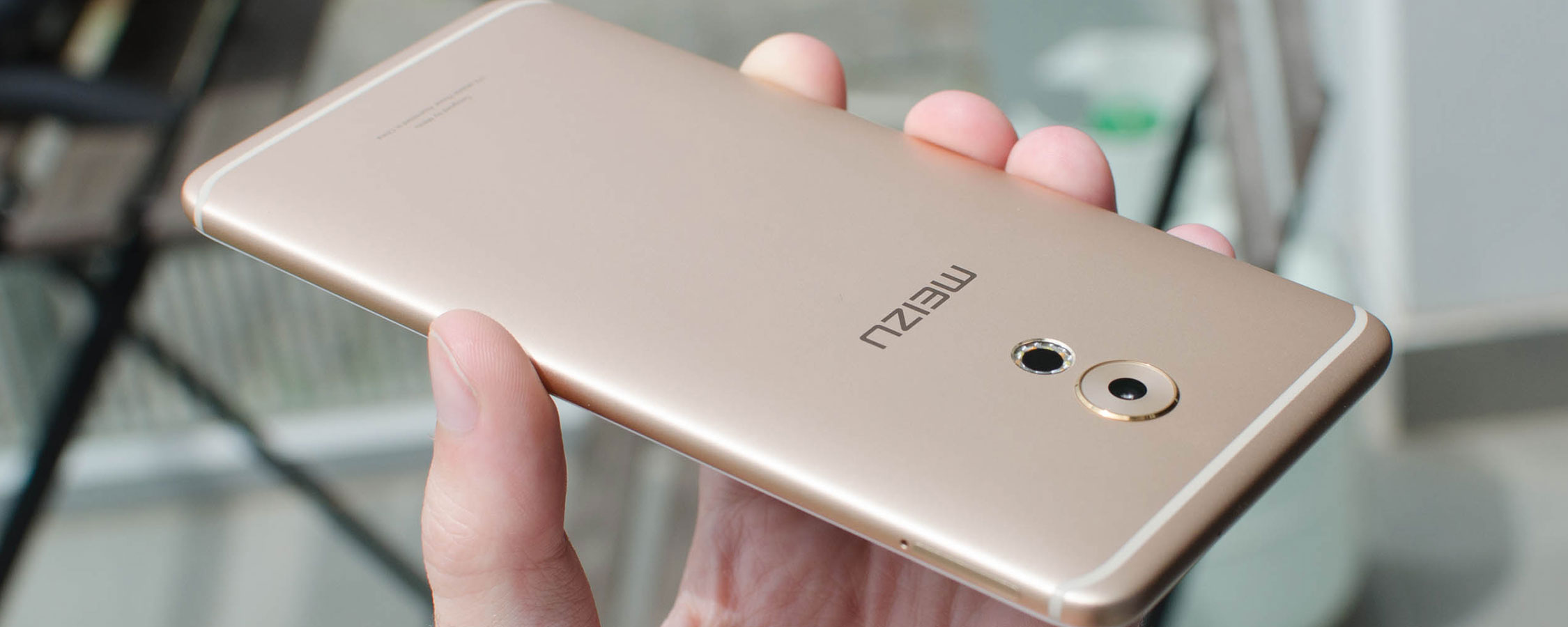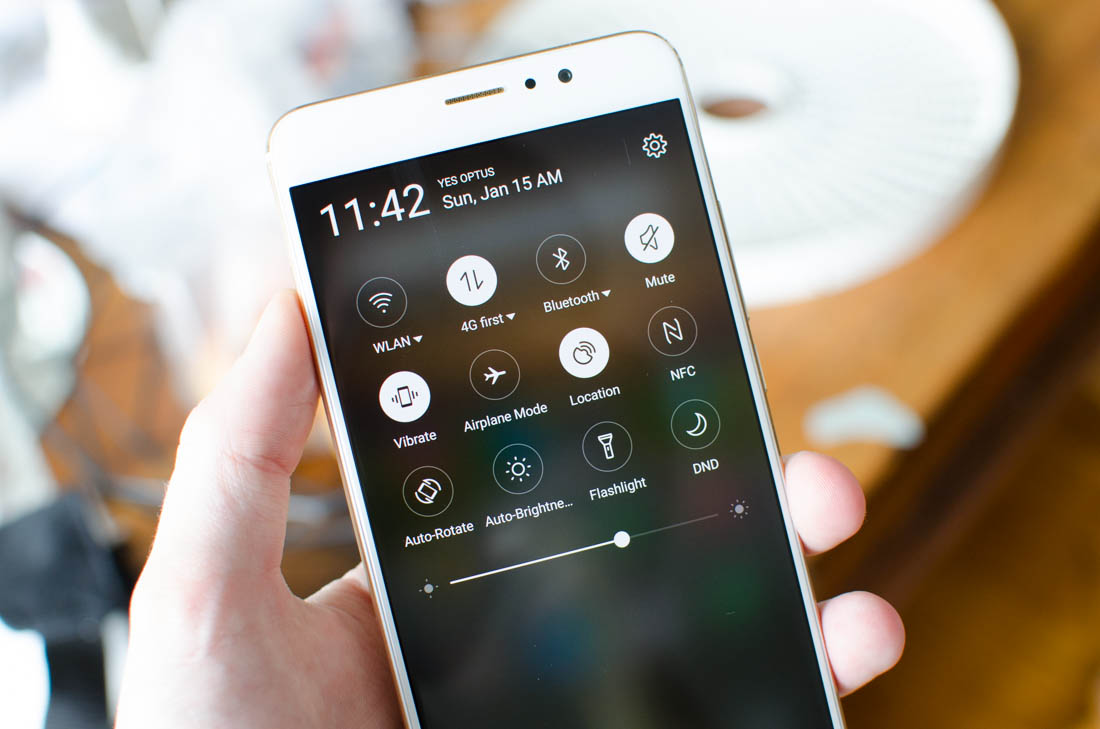Hardware Overview and System Performance
The Meizu Pro 6 Plus is the first non-Samsung device to hit the market with Samsung's Exynos 8890 SoC inside. This is the same SoC that Samsung used in the Galaxy S7 and Galaxy Note 7, so it's a truly high-end part that competes with the Qualcomm Snapdragon 820 seen in most of 2016's flagship devices.
The Exynos 8890 is a 14nm octa-core SoC, featuring four Samsung Exynos M1 CPU cores for high performance tasks, clocked up to 2.3 GHz, along with four ARM Cortex-A53 CPU cores clocked up to 1.6 GHz for power efficient processing. There's also an ARM Mali-T880 MP12 GPU clocked up to 650 MHz, and a 64-bit dual channel LPDDR4 memory controller providing around 29 GB/s of bandwidth.
Pro 6 Plus models with 128 GB of storage inside will see the full clock speeds of the Exynos 8890 unleashed. Those that opt for the cheaper 64 GB version will see the CPU underclocked to 2.0 GHz and 1.5 GHz across the M1 and A53 cores respectively, while the GPU has two of its 12 cores disabled. I'm not a huge fan of artificially limiting a chip's performance in lower-tier models of the same smartphone, but Meizu has higher margins on their larger storage devices, so for them it makes sense.
Other hardware includes 4 GB of RAM, Wi-Fi 802.11a/b/g/n/ac support on both 5.0 and 2.4 GHz, Bluetooth 4.1, and LTE support on unspecified bands. Here in Australia, I had no trouble using the Pro 6 Plus on our fast LTE networks, although you may not get the same experience everywhere.
When I first used the Pro 6 Plus, I wasn't greeted with a high-end experience. The phone seemed laggy, both in system animations and app loading, and it was obvious that the Exynos 8890 wasn't performing to the same standard as it does in the Galaxy S7. The Pro 6 Plus felt like a cheap entry-level device to use, and this clearly wasn't going to be acceptable for a $400+ handset with high end hardware.
After doing a little digging, I discovered a section of the battery settings labelled 'power mode', with options for a 'saving' mode along with 'balance' and 'performance'. Balance was enabled by default, so I flicked the Pro 6 Plus into performance mode to see how the two compared.
The difference is enormous between the balance and performance modes. When you switch to performance mode, the phone transforms from an entry-level experience to what you'd expect from a high-end device. The operating system was noticeably smoother and snappier, apps loaded faster, and persistent lag vanished. I've reviewed a ton of smartphones over the years, and I've never seen such a stark improvement in performance by flicking a software switch.
It's just plain stupid on Meizu's part to have the phone set in 'balance' mode by default when the experience sucks out of the box. This is a high end phone, buyers will be expecting top-end performance, and they shouldn't have to get it by changing a setting. My advice to any buyers of the Pro 6 Plus is to immediately enable the performance mode.
In the benchmarks that follow, I've included the results for the Pro 6 Plus in both its balance and performance modes. There is a significant difference in benchmark performance here that matches the significant difference in real-world experience.





In balance mode, the Pro 6 Plus is only 3 percent faster than the Moto G4 Plus, which has a mid-range Snapdragon 617 SoC, in CPU limited workloads. Considering the S617 is equipped with an octa-core Cortex-A53 CPU cluster, four of which are clocked up to 1.5 GHz, it's easy to draw conclusions about what 'balance' mode does to the Exynos 8890. This mode just disables the Exynos M1 high performance CPU cluster (graphics performance is also reduced by a moderate amount, possibly due to downclocking the GPU).
Switching to performance mode improves CPU performance by a huge 49 percent. Across all the benchmarks I tested, the Pro 6 Plus is 32 percent faster on average in this mode, which is a significant difference from a mere software switch.
The Exynos 8890 in the Galaxy S7 is still faster than the Exynos 8890 in the Pro 6 Plus with performance mode enabled, although results varied from test to test. The lower clock speeds of my 64 GB model, though, do appear to have a small effect. The OnePlus 3, a Snapdragon 820 device, was around 20 to 30 percent faster in CPU limited workloads.
One thing is abundantly clear, though, during my testing: the Pro 6 Plus does not produce high-end web browsing performance. High-end devices like the Galaxy S7 and OnePlus 3 routinely beat the Pro 6 Plus by 200 to 250 percent, and there is no difference in web browsing performance between the slow 'balance' mode and the 'performance' mode.
We use Google Chrome for testing all Android devices, and it should be noted here the Pro 6 Plus does not come with Chrome pre-installed like many other Android handsets. But performance in Meizu's included browser is also poor, so it's clear the company has made no effort to optimize the phone for this important use case. In fact looking at a performance monitor reveals that the M1 performance CPU cores do not fire up during web browsing, which is disappointing because this weakens browsing performance relative to other high-end handsets.
In most other apps I saw no appreciable performance difference between the Pro 6 Plus and other Exynos 8890 and Snapdragon 820 devices.


